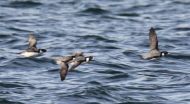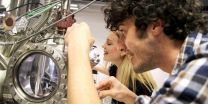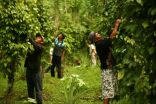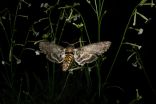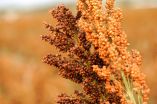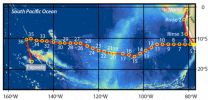(Press-News.org) UBC research shows world's monitored seabird populations have dropped 70 per cent since the 1950s, a stark indication that marine ecosystems are not doing well.
Michelle Paleczny, a UBC master's student and researcher with the Sea Around Us project, and co-authors compiled information on more than 500 seabird populations from around the world, representing 19 per cent of the global seabird population. They found overall populations had declined by 69.6 per cent, equivalent to a loss of about 230 million birds in 60 years.
"Seabirds are particularly good indicators of the health of marine ecosystems," said Paleczny. "When we see this magnitude of seabird decline, we can see there is something wrong with marine ecosystems. It gives us an idea of the overall impact we're having."
The dramatic decline is caused by a variety of factors including overfishing of the fish seabirds rely on for food, birds getting tangled in fishing gear, plastic and oil pollution, introduction of non-native predators to seabird colonies, destruction and changes to seabird habitat, and environmental and ecological changes caused by climate change.
Seabirds tend to travel the world's oceans foraging for food over their long lifetimes, and return to the same colonies to breed. Colony population numbers provide information to scientists about the health of the oceans the birds call home.
Albatross, an iconic marine bird that lives for several decades, were part of the study and showed substantial declines. Paleczny says these birds live so long and range so far that they encounter many dangers in their travels. A major threat to albatross is getting caught on longline fishing hooks and drowning, a problem that kills hundreds of thousands of seabirds every year.
"Our work demonstrates the strong need for increased seabird conservation effort internationally," said Paleczny. "Loss of seabirds causes a variety of impacts in coastal and marine ecosystems"
Seabirds play an important role in those ecosystems. They eat and are eaten by a variety of other marine species. They also transport nutrients in their waste back to the coastal ecosystems in which they breed, helping to fertilize entire food webs.
The study, published in PLOS ONE, is the first to estimate overall change in available global seabird population data. It is a collaboration between UBC researchers Paleczny, Vasiliki Karpouzi and Daniel Pauly and Edd Hammill, a lecturer at the University of Technology, Sydney in Australia.
INFORMATION:
Chemotherapy treatment usually involves the patient receiving medicine through an intravenous catheter. These catheters, as well as the the equipment attached to them, are treated with a silver coating which is antibacterial, preventing bacterial growth and unwanted infections during a treatment.
Researchers at the Norwegian University of Science and Technology's (NTNU) Department of Physics are now studying what happens when different drugs come in contact with this silver coating.
Silver breaks down chemotherapy drugs
"We wanted to find potential problem sources ...
This news release is available in German.
Although global concentration of greenhouse gases in the atmosphere has continuously increased over the past decade, the mean global surface temperature has not followed the same path. A team of international reseachers, KIT scientists among them, have now found an explanation for this slowing down in global warming: the incoming solar radiation in the years 2008-2011 was twice as much reflected by volcanic aerosol particles in the lowest part of the stratosphere than previously thought. The team presents their study ...
In a recent article in Nature, Keith Shepherd and the Land Health Decisions team at the World Agroforestry Centre (ICRAF), together with their external partners, propose a radically new method to the SDG community that would answer these questions. They call on the United Nations and private sector to dispense with the highly criticized target setting approach and adopt the new method of decision analysis.
The target setting approach is widely seen as ineffective or counter-productive. Targeting emphasizes meeting a 'target' rather than learning how to improve performance ...
The quality of waters can be assessed using of the organisms occurring therein. This approach often results in errors, because many species look alike. Therefore, new methods focus on DNA analyses instead. Biologists at the Ruhr-Universität Bochum (RUB) have optimised the process so that they are now able to identify many organisms at once in a quick and reliable manner using short DNA sequences. The results have been published in the PLOS ONE magazine.
Expert knowledge for species identification threatens to disappear
Industry, agriculture and human settlement ...
Researchers at the University of Liverpool's Institute of Infection and Global Health (IGH) have discovered a common cause of heart damage in patients with sepsis.
Sepsis is the most common cause of death in hospitalised critically ill people and affects up to 18 million people world-wide annually.
The electrical and mechanical malfunctions of the heart have been poorly understood in sepsis, with underdeveloped clinical management strategies, as a consequence. This new discovery, however, promises to benefit a high number of patients with heart failure or rhythm ...
Since 1994, researchers at Case Western Reserve University have studied mothers--some who used cocaine while pregnant and others who did not--to understand how the drug affected their children's cognitive and social development.
Their latest findings suggest a link between prenatal cocaine exposure and an adolescent's likelihood to have sexual intercourse before age 15.
Teens who were prenatally cocaine exposed (PCE) were 2.2 times more likely to engage in sexual intercourse before age 15 than those who weren't, yet how PCE affects early sexual behavior may differ ...
This news release is available in German.
Some pollinators not only provide fertilization services for flowering plants, they also lay their eggs on the plants' leaves after they have visited the flowers. Voracious caterpillars hatch from these eggs and their enormous appetite can easily kill the plants. So when plants advertise for pollinators they frequently also attract herbivores. Scientists from the Max Planck Institute for Chemical Ecology in Jena, Germany, demonstrated in field trials that the flowers of the coyote tobacco Nicotiana attenuata are able ...
AMES, Iowa - Developing any habit--good or bad--starts with a routine, and exercise is no exception. The trick is making exercise a habit that is hard to break. According to a new Iowa State University study, that may be easier to accomplish by focusing on cues that make going for a run or to the gym automatic.
Some interventions designed to help people start and continue exercising may focus on the execution habit, or an exact routine to follow at the gym, said Alison Phillips, an assistant professor of psychology at Iowa State. However, Phillips' research, published ...
MANHATTAN, Kansas -- A new study led by a Kansas State University geneticist has shown that genomic signatures of adaptation in crop plants can help predict how crop varieties respond to stress from their environments.
It is the first study to document that these genomic signatures of adaptation can help identify plants that will do well under certain stresses, such drought or toxic soils, said Geoff Morris, assistant professor of agronomy at Kansas State University and a researcher affiliated with the university's Feed the Future Innovation Lab for Collaborative Research ...
Since their first discovery a generation ago, it has been recognized that hydrothermal vents at the bottom of the deep dark oceans represented unique habitats for exotic forms of life previously unknown to science. But what has gone quite overlooked, until now, is the role that these "rare, exotic" systems might play in regulating the global-scale chemistry of the oceans and, hence, the health and productivity of our planet as a whole.
A new study by researchers from University of Washington (UW), Old Dominion University (ODU), Woods Hole Oceanographic Institution (WHOI), ...
